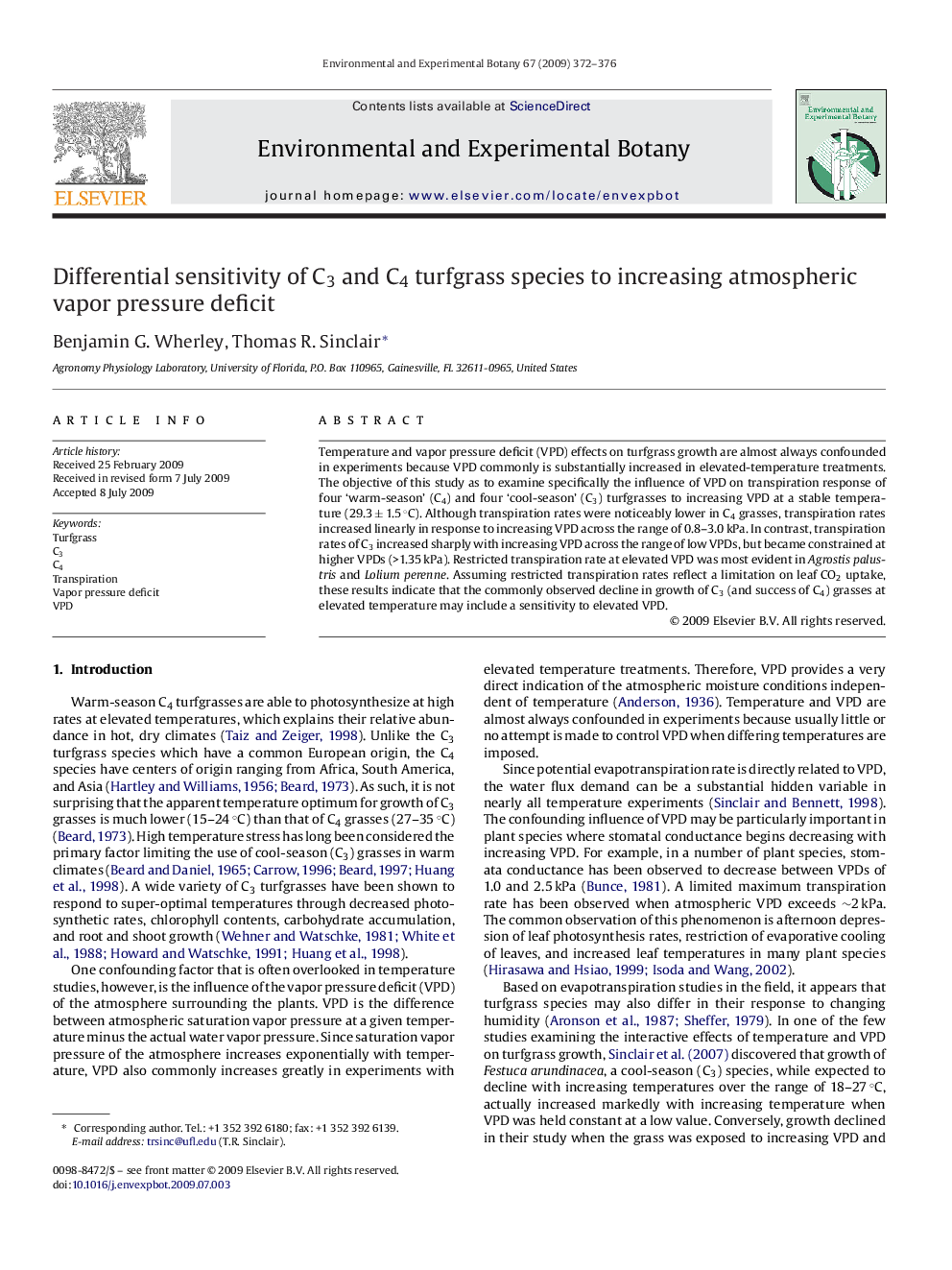| Article ID | Journal | Published Year | Pages | File Type |
|---|---|---|---|---|
| 4554972 | Environmental and Experimental Botany | 2009 | 5 Pages |
Temperature and vapor pressure deficit (VPD) effects on turfgrass growth are almost always confounded in experiments because VPD commonly is substantially increased in elevated-temperature treatments. The objective of this study as to examine specifically the influence of VPD on transpiration response of four ‘warm-season’ (C4) and four ‘cool-season’ (C3) turfgrasses to increasing VPD at a stable temperature (29.3 ± 1.5 °C). Although transpiration rates were noticeably lower in C4 grasses, transpiration rates increased linearly in response to increasing VPD across the range of 0.8–3.0 kPa. In contrast, transpiration rates of C3 increased sharply with increasing VPD across the range of low VPDs, but became constrained at higher VPDs (>1.35 kPa). Restricted transpiration rate at elevated VPD was most evident in Agrostis palustris and Lolium perenne. Assuming restricted transpiration rates reflect a limitation on leaf CO2 uptake, these results indicate that the commonly observed decline in growth of C3 (and success of C4) grasses at elevated temperature may include a sensitivity to elevated VPD.
